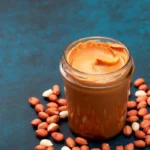
Sushi is a traditional Japanese rice dish made with vinegar, usually with a little sugar and salt, to go with a variety of ingredients such as seafood, often raw and vegetables. Sushi styles and their presentation vary widely, but the main ingredient is sushi rice, also known as shari or sumeshi.
Sushi did not originate in Japan but in the rice-growing region of Southeast Asia over 2,000 years ago along the Mekong River.
Sushi is a great source of omega-3 fatty acids.
In AD 8th-century Japan, sushi was so highly prized that people were allowed to use it to pay taxes.
Bluefin Tuna Sushi is the costliest Sushi in the world.
The “authentic” sushi that is typically associated with traditional Japanese sushi is called Edomae-zushi. It is a relatively recent invention that was initially limited to the region around Tokyo.
The knives used to prepare Sushi are sharpened every day.
During the U.S. sushi boom in the late 20th century, bluefin tuna—a big costal fish sold for cat food a decade earlier—became a luxury item.
A sushi chef can only work in a Japanese restaurant after ten years of training.
Ancient sushi chefs would use nori, or roasted seaweed, to bind rice and fish together.
The most expensive sushi is being served by Filipino chef Angelito Araneta Jr at a restaurant in Manila.
About 99.99% of all sushi rice that is served in the United States was grown in the United States.
Almost 80% of the world’s bluefin tuna caught is used for sushi.
The highest price ever paid for a sushi grade bluefin tuna was $396,000 on January 4th, 2011 in Tokyo.
June 18 is International Sushi Day.
Sushi is traditionally eaten with the fingers, although many people use chopsticks.
The first American sushi bar was opened in the early 1960s by Noritoshi Kanai, a Japanese native who ran a food import business in Los Angeles.
Women were not permitted to be sushi chefs, as it was supposed that their warmer hands would taint the taste and quality of the fish.
The California roll, or the inside-out roll, was the first American-born type of sushi.
Only the fish side of nigiri sushi should be dipped in soy sauce, not the rice.
There are six types of sushi: Chirashizushi (scattered sushi), Inarizushi (named after the Shinto god Inari), Makizushi (rolled sushi), Narezushi (matured sushi) Nigirizushi (hand-pressed sushi), and Oshizushi (pressed sushi).
Wasabi is added to sushi to soften any fishy odors and draw out the flavor of fish.
Some diseases that can be transmitted by eating sushi include herring worm, roundworms, and other human parasites. Sushi can also cause several bacterial infections.
Wasting soy sauce is disrespectful in Japan.
People with liver disorders or weakened immune systems—such as small children, the elderly, and pregnant women—should avoid eating sushi.
It is a tradition to eat whole nigiri on the first try.
A salmonella outbreak linked to raw tuna in sushi sickened over 50 people in 9 states in May 2015.
Sushi is mostly low in fat and high in protein.
There are about 3,946 sushi restaurants in the U.S. Japan has about 45,000.
In Japan, green tea is invariably served together with sushi.
A standard nigiri sushi roll contains about 350 calories, 10 grams of protein, 40 grams of carbs, 3 grams of unsaturated fat, and 0.5 grams of sodium.
The mixing of wasabi and soy sauce has become common in the west, but in Japan, it is rarely seen.
Sushi restaurants in the United States generate $2 billion in annual revenue.
Avacado, cucumber, and carrots are the most popular veggies used in Sushi.
Sushi represents a “fifth taste” after salt, sweet, sour, and bitter. This fifth taste, or umami, is also found in asparagus, tomatoes, cheese, meat, and kelp.
Futomaki is a more popular variation of sushi within the United States, and comes in variations that take their names from their place of origin.
The record for the largest sushi mosaic is 452 feet squared by 140 inches squared. It was created in Ono, Fukui, Japan, on January 31, 2015. Imitation crab meat and mackerel were used to make the tasty mosaic.
The world’s largest sushi roll is served in Umewaka Restaurant in Anjo City.
The longest sushi roll ever created measured 2,521.74 meters (about 8,270 ft.) and was constructed in Russia in December 2011 at the Sushkof Restaurant.
Eighty-six-year-old Jiro Ono is considered to be the world’s best sushi chief.









